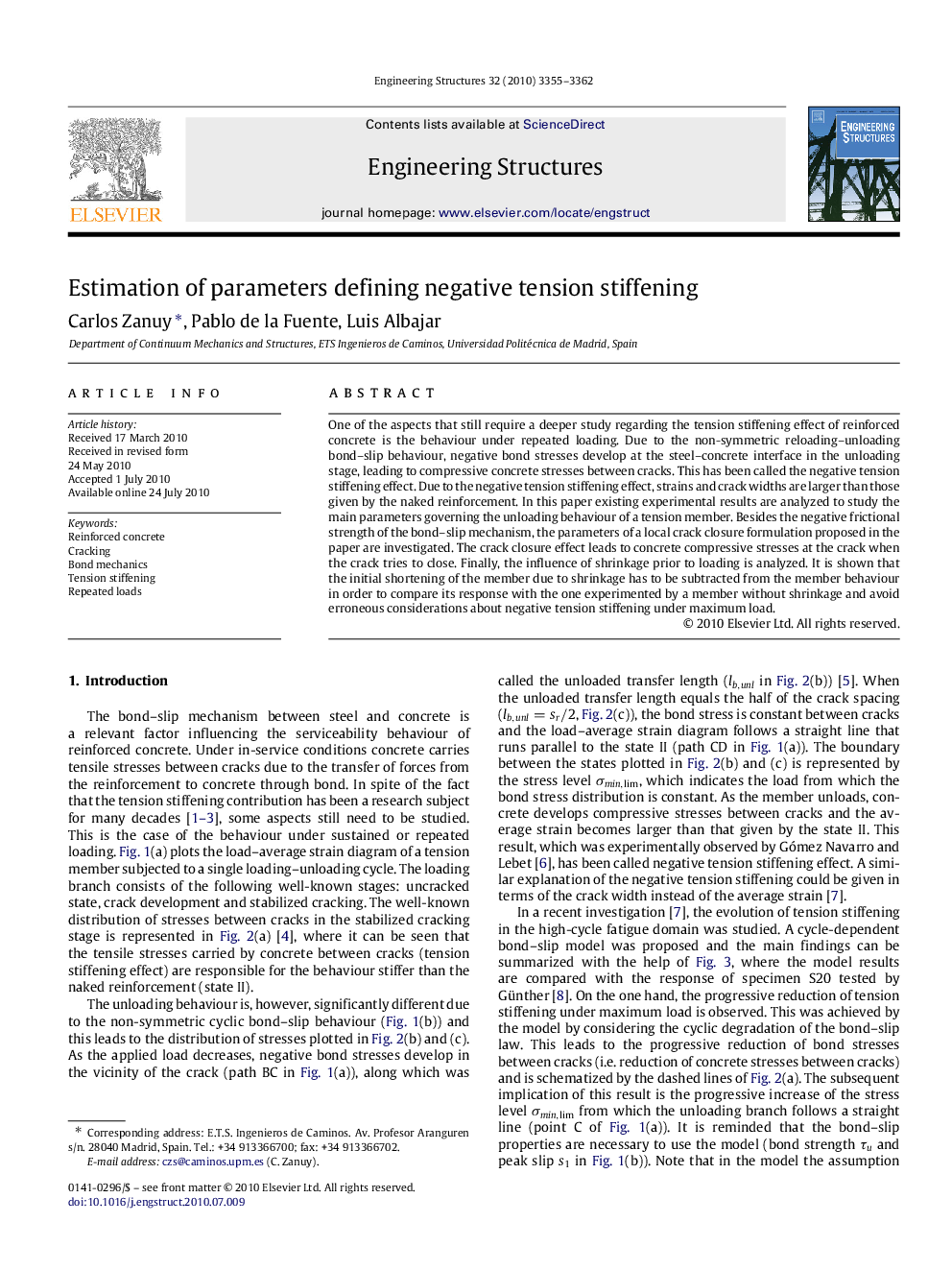| Article ID | Journal | Published Year | Pages | File Type |
|---|---|---|---|---|
| 268117 | Engineering Structures | 2010 | 8 Pages |
One of the aspects that still require a deeper study regarding the tension stiffening effect of reinforced concrete is the behaviour under repeated loading. Due to the non-symmetric reloading–unloading bond–slip behaviour, negative bond stresses develop at the steel–concrete interface in the unloading stage, leading to compressive concrete stresses between cracks. This has been called the negative tension stiffening effect. Due to the negative tension stiffening effect, strains and crack widths are larger than those given by the naked reinforcement. In this paper existing experimental results are analyzed to study the main parameters governing the unloading behaviour of a tension member. Besides the negative frictional strength of the bond–slip mechanism, the parameters of a local crack closure formulation proposed in the paper are investigated. The crack closure effect leads to concrete compressive stresses at the crack when the crack tries to close. Finally, the influence of shrinkage prior to loading is analyzed. It is shown that the initial shortening of the member due to shrinkage has to be subtracted from the member behaviour in order to compare its response with the one experimented by a member without shrinkage and avoid erroneous considerations about negative tension stiffening under maximum load.
